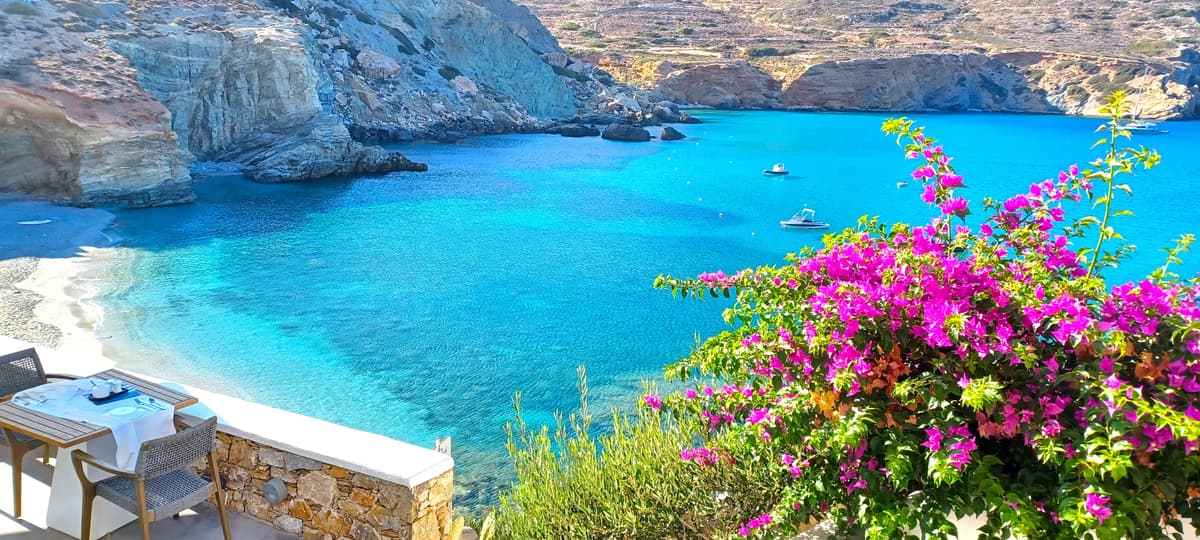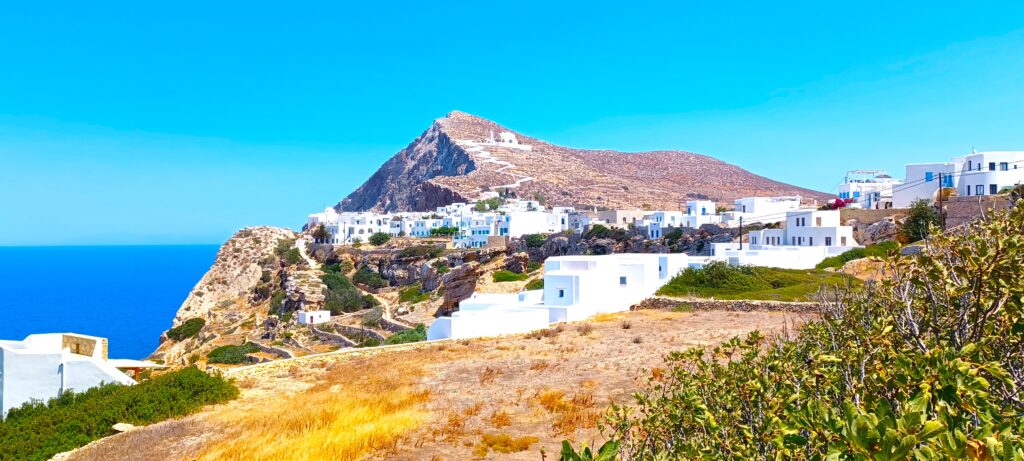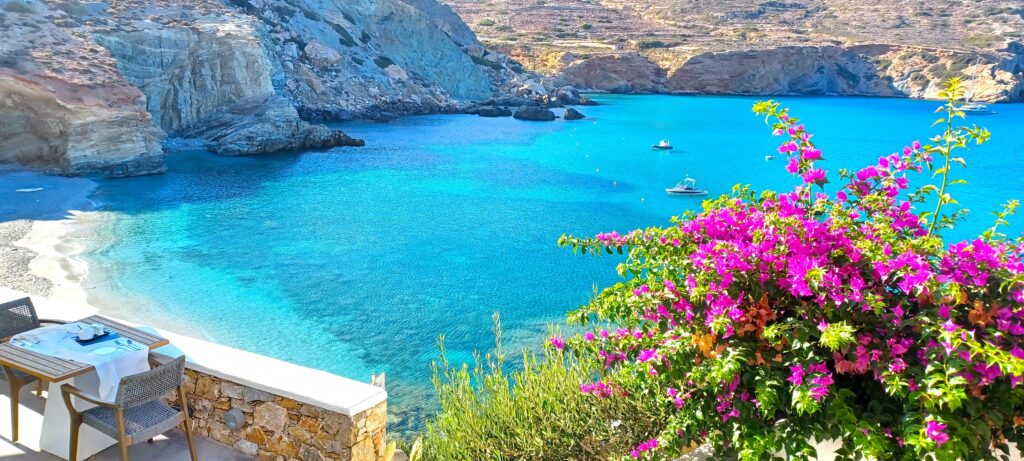Welcome to Folegandros, the Secret Island Hideaway That Tom Hanks Forgot
This tiny Greek island is easy to get to, but it can be difficult to leave.

Writer Paul Theroux, in the course of a looping interview some time ago that touched on the marvelousness of Hong Kong when it was British, declined to answer a simple question: What was his favorite beach in Hawaii? The topic arose because the author lives there for much of the year, and there was no way he was going to divulge certain prized locations.
However, in this summer of overtourism, playing the Cheshire Cat when it comes to guarding favorite addresses seems like a fool’s errand. Everything is discovered. So, with obeisance to Mr. Theoux’s obstinacy, I might as well spill what I know about the Greek island of Folegandros. For if I do not, somebody else surely will.
It will likely not be Tom Hanks. The actor has a house on Antiparos, a nearby island with less charm but more celebrity pull. Why or how Mr. Hanks, who has honorary Greek citizenship, overlooked Folegandros is a bit mysterious. In the meantime, the French are snapping up properties here as if they were the last baguettes at the only bakery in town.

It is a small island, more like a big sweep of rock jutting up from the cerulean sea to the east of Santorini. The landscapes offer up visions of the elemental — sea, rock, sky — that are spellbinding in their severity. Given its diminutive size, remoteness in the Aegean, and lack of vegetation, it is little wonder Folegandros served as an open air prison for opponents of the military junta that ruled Greece between 1967 and 1974.
I arrived on a creaky ferry that was refreshingly cheap and breezy but definitely not straight out of the pages of a glossy travel brochure. Holding onto the taffrail as the ship listed to and fro, buffeted by the rough waves of the midsummer meltemi winds, I was dismayed by the lack of visual drama — at first. When I queried a local passenger if the little harbor coming into view was the only settlement on the island, she replied unfazed and without looking at me (well, maybe she was from behind her oversized sunglasses): “Folegandros is not Santorini — not everything is revealed at once.”
Right she was. First there is the Smurf Village-esque harbor of Karavostasis, which sounds more like the name of a medical condition than a place for enticing strolls under the Mediterranean sun. It is home to a small but fantastic market called Kalymnios that is like an Aegean version of Dean & Deluca. They sell a soft cheese made on the island that resembles cottage cheese but with a sweet and tangy kick.
The best and most pristine beach is Katergo, and the easiest way to get there is by the little boats that in summertime chug back and forth between it and Karavostasis. One could spend hours on a beach like Katergo, where the radiant water dazzles like a profusion of blue liquid glass, but there is more.
The best way to think of Folegandros is like an accordian — you cannot see what is ahead because the intermediate folds of the instrument are in the way. I drove north from Karavostasis, because driving south would put you in the water. For about a mile things look like a little chunk of New Mexico — nothing but steep slopes, rocky and arid, on either side. Then there comes a clue: a chapel painted bright white, not so much clinging to the hillside as built right into it, probably to make sure it doesn’t tumble down in the next earthquake.
Up a little farther and around a long, curving bend in the road, the Instagram jewel of the island, the Church of Panagia, or the Virgin Mary, comes into view. It is also painted bright white, as is the long trail that zigzags its way up the cliff face on which it is perched. The crag plunges precipitously to the swirling sea below. The church looms over the Chora, as the main settlement is called and which is itself stuck on a cliff that looms nearly 700 feet above the sea.
The Chora of Folegandros is car-free and quintessential Cycladic hamlet — whitewashed alleys, pink bougainvillea flowers blowing in the hot breeze, cats that belong to everyone and no one lazing in the sun, casual Greek tavernas that invite lingering. There is a kind of hush here, even in the middle of summer, that offers the flavor of Mykonos or Santorini before the invasion of the cruise ships.
There are no such lumbering vessels here, obviously — the port couldn’t contain them. However, if you stay above Agkali Beach, you can experience the sensation of floating on the water. The quite perfect and not too expensive boutique hotel I checked into for a night, Blue Sand, reminded me of an upscale version of the fictitious seaside hamlet of Sweethaven in the movie version of “Popeye.” It hovers amphitheatrically over an impressive curl of beach, framed by another soaring cliff. Walk down a well-maintained stone staircase for a couple hundred feet and there you are at water’s edge. I think this is the definition of carefree.

The hotel’s fine restaurant serves Mediterranean cuisine “with a twist” — a description that normally would make me a little skeptical, but then I tried a dish made with the locally sourced matsata pasta. Maybe it was the addition of capers and tomatoes from nearby Santorini, but it was as phenomenal as the setting, a beautiful terrace with sweeping views of the big blue.
Breakfast the next day (included in the room price) involved a plate of eggs scrambled with feta cheese and tomatoes called strapatsada, a copious serving of fresh fruits, and home baked bread, too.
With that kind of food and those kinds of swoon-worthy views, I kept waiting for something to go wrong, so of course something did: I failed to miss my ferry back to bigger and — sigh — less untroubled places.

